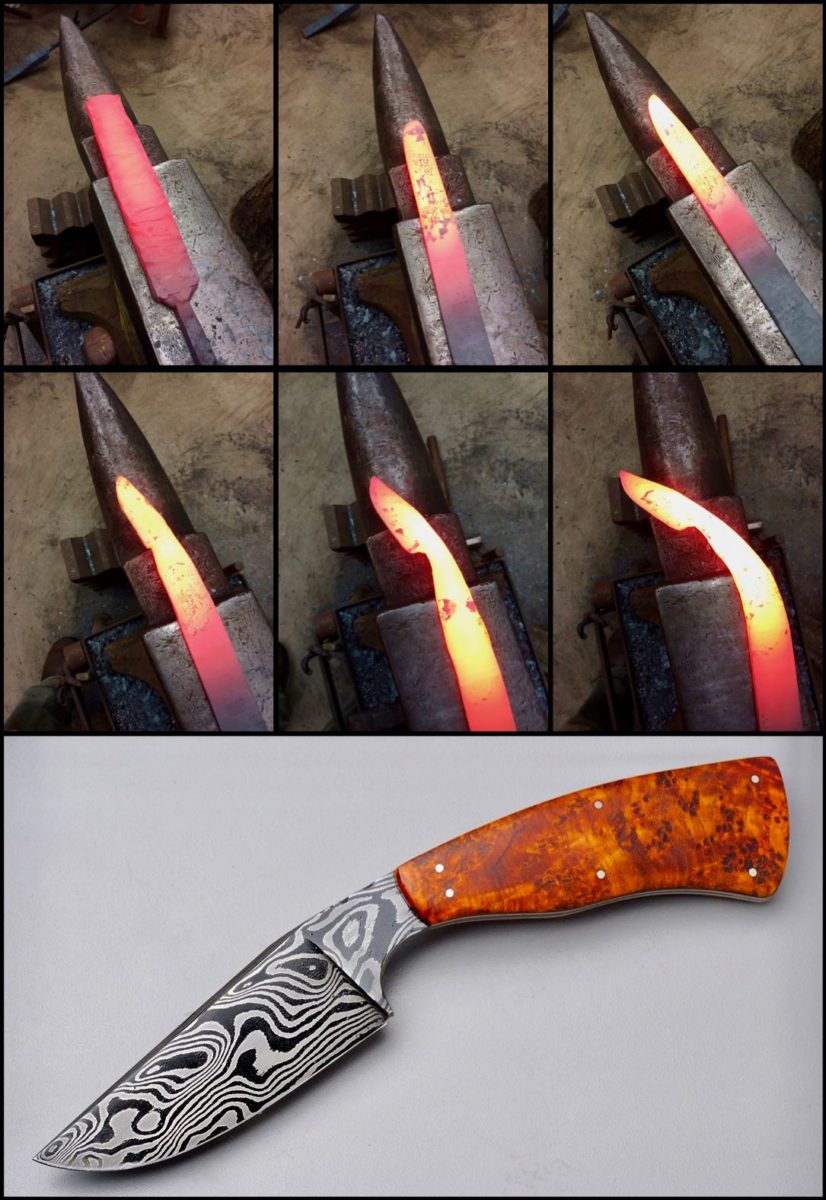Forging A Damascus Steel Knife
I cut matching plates of two different alloys of steel, and then I bind them together into a packet called a “billet.”
I heat the billet to more than 2000 degrees and hammer it to make the layers weld together. This is called forge welding, and it turns the billet into a solid block of steel.
Next I hammer the billet out into a long bar and re-stack it so I can repeat the first forge welding step. Once I have achieved the layer count that I want, I can begin patterning.
The possibilities for damascus patterning are endless. I can bend, twist, displace, cut, or grind the billet–or all of the above–and then re-stack it and do it all over again. Eventually, I forge the billet out into a bar, and then I can begin forging the knife from there.
I think damascus is totally beguiling.



